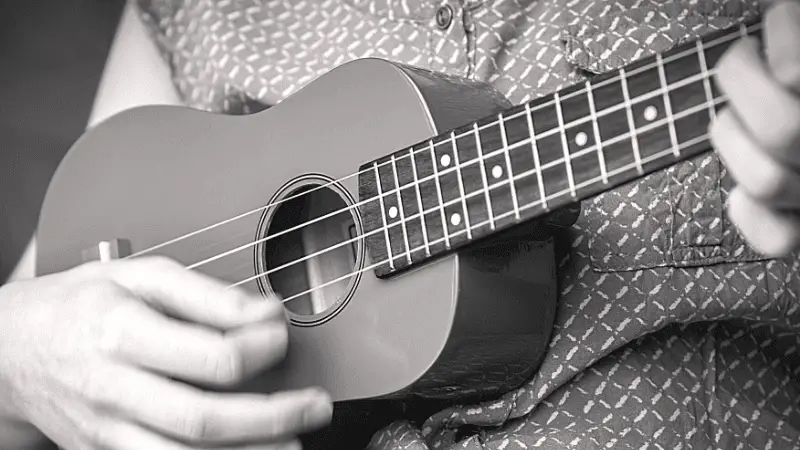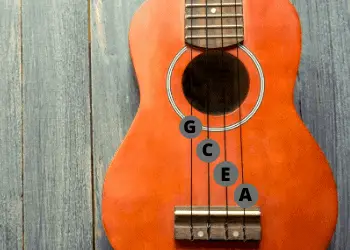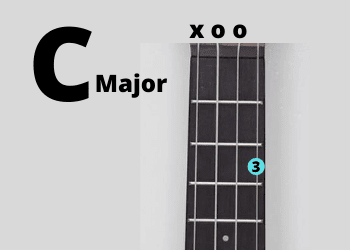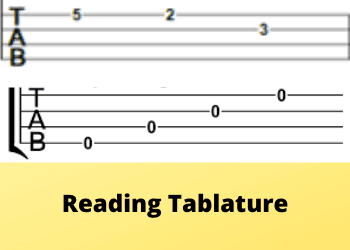Eager to know all about Ukulele and it’s playing basics? Here we cover all the necessary things that you must need to know! Also, we share our top 10 tips for you.
For a long time, the humble ukulele has been regarded as a toy instrument. Then again, its simplicity is the reason for its educational value. Although a very simple one, yet it is able to create one of the finest music among all other instruments there is.
Anyone who has heard ‘Over The Rainbow’ by Israel Kamakawiwo or perhaps ‘Riptide’ by Vance Joy would agree instantly. The reason can only be explained by music.
Ukulele has a mesmerizing ability to snap up and lighten your mood. It’s that simple. The most resonating piece of ukulele quote that I ever read was from a ukulele maestro:
“If everyone played the ukulele, the world would be a better place” -Jake Shimabukuro
As time passed, ukulele had spread from Hawaii to all corners of the world. It’s so amazing how the sound of a small instrument can unify countless people across the world with the same interest. Besides, the joy of being able to play the ukulele as a beginner for the first time is beyond words. So, let’s deep dive into Hawaii’s finest ukulele for beginners.
What Is A Ukulele?

The Ukulele is a classical musical instrument that consists of four-string. It’s a classical guitar made from wood but a small one.
Background
Ukulele is originated in the 19th century, particularly around the 1880s. The word ukulele originates from a Hawaiian descent and is pronounced as (yoo.kuh.lei.lee) or ukulele (oo.koo.leh.leh). The name ‘uku lele’ meaning ‘jumping fleas’ had been suggested from the movement of fingers while playing the instrument.
Origin
The origin of the ukulele is from the lute family of instruments. Usually, a ukulele consists of four strings and greatly resembles an acoustic guitar. Similarly, the lute is also a string-based instrument played by plucking the strings. It consists of a wooden body with an opening outside the body and a neck (fretted or unfretted).
Anatomy
The ukulele is equally portable, like an acoustic guitar with a few visible changes. It has a mini-sized guitar-like body, a short neck, a body with a small opening (called sound-hole), four strings, tuning pegs, a bridge, and a fretboard.
Types
Most ukuleles fall under these four standard sizes and tonal ranges. These are:
- Soprano (Scale Length: 13 Inches, Total Length: 21 Inches)
Visit Example Page From Amazon
- Concert (Scale Length: 15 Inches, Total Length: 23 Inches)
Visit Example Page From Amazon
- Tenor (Scale Length: 17 Inches, Total Length: 26 Inches)
Visit Example Page From Amazon
- Baritone (Scale Length: 19 Inches, Total Length: 30 Inches)
Visit Example Page From Amazon
History
Most people mistakenly consider ukulele as a Hawaiian instrument. But in reality, that’s not true at all. Rather, it is a descendent of Portuguese guitars such as – Portuguese machete, cavaquinho, the timple, and rajão. Portuguese guitars and the ukulele are quite similar in size. But they still differ in the number of strings since the ukuleles only have four strings while Portuguese guitars have more.
But, how did Portugal get linked with Hawaii?
As history says, by the 1500s, Madeira became one of the leading producers of sugar in the world, and so was slavery. As such, many people were sent from Portugal to different parts of the world to work in the sugar plantations.
Among the travelers, two men – Manuel Nunes and Augusto Dias played key roles in popularizing the machete in Hawaii. In the beginning, it was patronized by King David Kalakaua of Hawaii’s Royal Family.
The King, who was an accomplished musician, embraced the new instrument and played it on important national occasions. Soon, people started to embrace the sound of happiness.
Later on, Nunes and Dias redesigned the machete. They replaced the nylon strings with catgut and made the body from the wood of Koa trees. Gradually, the ukulele became accepted by the Hawaiian people as they named it the ‘Aloha Aina’ or ‘love of the land.’
Musical Genres Covered by Ukulele
The ukulele is different than a guitar in a lot of ways. For one, it is missing 2 chords. And also, the fretboard is shorter, so you cannot reach the scales of a guitar on the ukulele.
But there is good news…
There are ways in which you can translate the shapes and licks from a guitar and play them on a ukulele.
Modern pop had accepted the use of ukulele in pop music. But there are always opportunities to explore unlimited blues and jazz music on the ukulele. Also, it’s common sense that the ukulele doesn’t go with metal.
But there is no limit to exploring different genres and finding your own style of music.
Ukulele Basics

People generally expect a lot less from a ukulele. But that rarely gets in the way of a fantastic ukulele virtuoso. Certainly, you need to master the basics of a ukulele to become one of the best.
How It Works
To produce a sound, all instrument needs to create a vibration that moves the air around itself in a controlled frequency. The human voice uses vocal cords while violins, guitar, and the ukulele use vibrating strings. The vibration of the strings transmits the sound waves to the body that resonates in the cavity and produces the sound from the sound-hole.
There are two ways you can play the ukulele –
By plucking and by strumming.

In both cases, it creates a motion that sets the vibration, which ultimately produces a pitch. Intense vibration means higher pitch and vice versa. However, the pitch can be changed by rotating the tuning pegs on either side to increase or decrease the tension of the string.
Instructions are similar to that of a guitar –
Turn the peg clockwise to produce a higher pitch, and conversely, anti-clockwise motion with produce a lower pitch. The strings are all of the same lengths. So, the best you can do is to shorten them while playing if you just press the chosen string on the fretboard.
Tuning A Ukulele
The ukulele has only four strings labeled from 1 to 4. String one is the thinnest (produces the highest pitch), and string four is the thickest of the pack (produces the lowest pitch).
In general, the standard tuning of a stringed instrument starts from the lowest tuned string to the highest tuned string. And it looks like this:
1st string = A
2nd string = E
3rd string = C
4th string = G
The standard order of the notes in a ukulele is G-C-E-A.

If you feel it’s tough to remember then, memorize this pneumonic –
‘Good Cats Eat Almonds’
For a beginner, it’ll be best if you use an electronic tuner. Also, you can use a tuner app on your smartphone. But if you don’t have a tuner then, you can do it by ear tuning. Besides, you can have a friend do it for you, or you can try matching the sound with their ukulele.
Read Also
Best Practices
A ukulele player in motion deals with chords for most of his life. So, the sooner you learn and adjust with them, the better. But first, before you get into chords, you need to know these things:
- How to read chord diagrams
- How to read tab
- Posture and hand positioning
Reading Chord Diagrams
Let’s begin with some instructions:
-
- Vertical Lines = Strings
- Horizontal Lines = Frets
- Dots = Fretted Notes
- X = Unplayed Strings
- O = Open Strings

Now, hold your ukulele upright, and you’ll find resemblance with a chord diagram. The good thing is that it tells you everything you need to know about playing a particular chord. Also, which finger to use while playing it.
This is the order of fingers labeled in a chord diagram:
- 1 = Index
- 2 = Middle
- 3 = Ring
- 4 = Pinky

Reading Tablature (Tab)
People who play stringed instruments such as – guitarists, bassists, violinists, and ukulele players use a special graphical notation system called tablature or simply tab. A tablature depicts the exact placement and the order of finger to be placed on the fretboard.
All tabs are read and written from left to right. The tabs are written between four horizontal rows, which represent the four strings on the ukulele. The notes are marked by numbers placed on the lines. For example –
1 represents the 1st fret. 2 represents the 2nd fret, and so on…
In the first graphic, 5 and 2 represents the 5th fret 1st string and 2nd fret 1st string respectively. 3 represents 3rd fret 2nd string. On the other hand, in the second graphic, 0 means you have to strum the string without holding any note and that’s called an open string.

Properly Holding Your Ukulele
A good ukulele player must know how to hold the ukulele properly. In fact, this is your first lesson at a music school.

Here are some easy tips on how to hold the ukulele:
- Try to touch the instrument as little as possible
- Press the back of the ukulele against the body
- Place the forearm on the ukulele just behind the bridge (position it in such a way that it falls naturally on the junction between the body and the neck)
- Place the underside of the neck between the thumb and the index finger
Obviously, there are more tips on how to play the ukulele for beginners. We are going to discuss more as we go through with it.
Top 10 Ukulele Playing Tips For Beginners

These are some of the best tips on how to learn playing ukulele like an expert:
- Buy a decent ukulele:
Choosing a standard size of ukulele is very crucial so, pick one wisely.
Sopranos are small and good for smaller kids.
Concert ukuleles have a sound similar to a Soprano except for a slightly deeper and louder sound.
Tenor ukuleles have a more spacious fingerboard that fits larger hands more easily.
Baritone ukuleles are capable of producing the deepest base note compared to their siblings. Plus, it’s tuned similarly to the first four strings of a guitar that makes it a smooth transition for guitarists.
- Learn how to hold a ukulele:
There are three main contact points while holding a ukulele:
- Holding the back of the uke against the body
- Placing the forearm naturally over the junction between the neck and the body
- Placing the underside of the uke against the crook (between the thumb and the index finger of the hand holding the neck)
- Tune it to perfection
Ukuleles can be tuned in several ways. As a beginner, you might either play alone or with a friend/mentor. While playing alone, you only need to be in tune with yourself. While playing with others, it’s best if you’re in tune with the rest.
Here are some ways you can tune your ukulele:
- Using an electronic tuner is the safest way to tune for beginners. Also, it’s good for perfect tuning in noisy places
- Use an app to tune the ukulele. Guitar Tuna is a great app for starters
- Ear training and repeating make the tuning perfect over time. Try to bring the original sound from an audio track by careful listening and tuning
- Tune it like a guitar if you’re playing with a guitarist
- Align your tune with a piano
- Try to tune it yourself when nothing is available
- Use a metronome for strumming
- The best advice for strumming is to stay loose
- Let your wrist do the strumming and release the force from the fingers
- Make your wrist move like it is rotating on the strings
- Align your body and mind with calmness and make sure your strumming maintains a steady rhythm
- Use a metronome to practice strumming at different bitrates to achieve better control over the wrist
- Make it fun
Enjoy your time as a ukulele player. Feel the joy of the sound of a ukulele and play it so that it makes other people happy.
- Use free online resources to learn songs
There are lots of good resources. Some popular names are listed below:
- Websites: DoctorUke, Ukulele Underground, Stewart Greenhill’s Ukulele Songbook. Check this page if you want to check more websites for free content.
- YouTube Channel: Bernadette Teaches Music, Andy Guitar, The Ukulele Teacher, U CAN UKE
- Apps: Uke Like The Pros, The Uke App, Learning Ukulele In 7 Days, and many more.
- Use paid resources to learn further
Ukulele like the pros, Ukulele buddy, ArtistWorks, Ukulele tricks, Learning Ukulele with Curt is some of the best resources to learn even further.
- Give time for practice
To be the best, you have to give it like the best out there. So, make sure your time is worth it.
- Finger training and exercise
It’s not easy to play the ukulele like an expert at the start. In most cases, our fingers aren’t adjusted with the way it stretches and bends. Here are some common exercises to give some flexibility to your fingers:
- Hand Pull
- Reverse Hand Pull
- Thumb Pull
- Play, record, and repeat
Record your own cover songs and listen carefully for mistakes, and fine-tune those mistakes.
Best Ukulele Brands

- Kala
- Fender
- Lanikai
- Mahalo
- Sawtooth
- Oscar Schmidt
- Cordoba
Final Words
So, that is all I have to offer about ukulele playing for beginners. Ukulele is a social instrument. It spreads love, joy, and mesmerizes the people with its harmony. As a ukulele aficionado, it’s up to you to spread that joy among the people you care about. Dedicate them a song, write something new about them, and so on.
Last but not least, I wish you a wonderful musical adventure. Happy playing!
